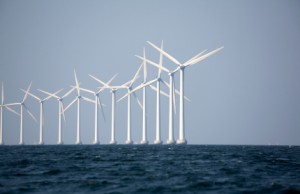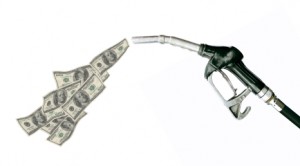Source: LiveScience
 A few years back I wrote about how ever-shrinking migration corridors across the American landscape threatened wildlife populations. Corridors are the natural avenues along which migratory wildlife travel, plants propagate, genes flow and species relocate in response to environmental changes. The Yellowstone-to-Yukon corridor spanning US and Canada is a good local example.
A few years back I wrote about how ever-shrinking migration corridors across the American landscape threatened wildlife populations. Corridors are the natural avenues along which migratory wildlife travel, plants propagate, genes flow and species relocate in response to environmental changes. The Yellowstone-to-Yukon corridor spanning US and Canada is a good local example.
It’s one of the most underreported stories in the long parade of environmental causes. Possibly because it treads on so many sacrosanct issues like private land rights, housing and jobs.
So I was heartened when Treehugger brought the issue to light again this week in its 5 things you need to know about wildlife corridors post.
In a nutshell, the piece explains why current efforts by conservationists to establish protected habitats is folly if there’s no unencumbered connectivity between them. More importantly, the piece points out that it’s a political issue. Not so much for the environmentalist-vs-developer theatre, but rather for the cross-border cooperation needed between states and internationally in order to make it happen.
As my forementioned piece on computational ecology points out, we already have the data; we have the technology. If we can rally such inter-government cooperation to pull-off controversial commercial corridors for the Keystone pipeline spanning the Canadian oil sands to the Texas Gulf Coast (or, closer to home for me, the Quebec Hydro Northern Pass project), surely we can muster some cooperation and a few dollars to address this under-the-radar threat of wildlife extinction.
Watching the decade-long fight to approve the Cape Wind farm, my support for off-shore wind was always tempered by local resistance to the project. I didn’t buy into their NIMBY arguments, but having grown up near the Seabrook Nuclear Power Plant, I was at least sensitive to their plight. It’s tough to battle against sincere civic opposition.
 The good news is that the opposition to off-shore wind has shifted from civic to the tyrannical. As Grist magazine reported a couple of weeks ago, Big-Oil billionaire Koch Brothers have declared war on off-shore wind, starting with a grossly distorted cost-analysis report on a New Jersey off-shore wind project from Kochs’ Americans for Prosperity front group.
The good news is that the opposition to off-shore wind has shifted from civic to the tyrannical. As Grist magazine reported a couple of weeks ago, Big-Oil billionaire Koch Brothers have declared war on off-shore wind, starting with a grossly distorted cost-analysis report on a New Jersey off-shore wind project from Kochs’ Americans for Prosperity front group.
It’s good news because off-shore wind can use this new foe to its advantage. Shining a light on dirty money and astro-turfing efforts can sway public opinion and rally support from otherwise ambivalent citizens. Heroes need a villain.
A quick update on the export land issue that I blogged about previously. In short, the problem is petroleum-producing countries becoming wealthy exporting oil and then finding their rising domestic oil use significantly cutting into what’s available for export even as their oil fields become less productive due to age. The ramifications are manifold – from unrest at home as shrinking revenues reduce subsidies and push up prices on things like food and gasoline, to turmoil on international markets as shrinking surplus capacity makes it easier for traders to drive price swings through speculation.
 With this in mind, a few recent stories involving Saudi Arabia caught my eye. The first is a pretty straightforward endorsement of the export land model theory. In this story, Abdel Salam al-Yamani, head of the Saudi Electricity Company, is quoted as saying that, if left unchecked, Saudi Arabia’s current domestic oil consumption rates will deplete the country’s reserves by 2030. The second story involves the Saudi’s ramping up a nuclear energy program to the tune of at least $100 billion dollars. This story on the Saudi oil export and energy issue in the Wall Street Journal has a nice graph charting rising Saudi oil consumption. Finally, this story pulls in the previous points and also notes that the Saudi’s are going full bore into an energy source they’re likely to have in abundance for a long time to come: solar. Who knows, maybe one day they’ll be exporting that energy, too. In the meantime, the Middle East, in general, seems interested in conservation to ensure exports of their main revenue source remains high.
With this in mind, a few recent stories involving Saudi Arabia caught my eye. The first is a pretty straightforward endorsement of the export land model theory. In this story, Abdel Salam al-Yamani, head of the Saudi Electricity Company, is quoted as saying that, if left unchecked, Saudi Arabia’s current domestic oil consumption rates will deplete the country’s reserves by 2030. The second story involves the Saudi’s ramping up a nuclear energy program to the tune of at least $100 billion dollars. This story on the Saudi oil export and energy issue in the Wall Street Journal has a nice graph charting rising Saudi oil consumption. Finally, this story pulls in the previous points and also notes that the Saudi’s are going full bore into an energy source they’re likely to have in abundance for a long time to come: solar. Who knows, maybe one day they’ll be exporting that energy, too. In the meantime, the Middle East, in general, seems interested in conservation to ensure exports of their main revenue source remains high.
The Oil Curse is a subset of the Resource Curse, describing an apparent paradox in developing countries “blessed with” large reserves of petroleum. The term refers to the political repression, corruption and violence that seem to accompany the development of oil resources in places like Nigeria.
 But that definition might need to stretch because we in the United States – still a top three global oil producer – are living our own Oil Curse. It’s the curse of addiction.
But that definition might need to stretch because we in the United States – still a top three global oil producer – are living our own Oil Curse. It’s the curse of addiction.
Our transportation system and its supporting infrastructure are the lifeblood of the American lifestyle (which I’m told is not negotiable) and they’re built from the ground up around oil: the roadside stations that keep cars and light trucks fueled, the tanker trucks that keep the stations supplied, the roads the tanker trucks travel on to and from the tank farms, the refineries that keep those tank farms filled, the pipelines snaking cross-country and tanker ships docking at specialized ports. Deeply woven over the past 100-plus years, it’s a blessing that’s evolving into a curse.
As we bump along the plateau of Peak Oil, supply becomes more difficult to maintain at a flow rate demanded by a constant-growth economic model. There is a clear need to move beyond petroleum. However, the influence of stakeholders heavily invested in, and greatly benefitting from, the current energy model creates a drag on innovation and transition. And to be clear, the stakeholders aren’t simply the major oil companies and the firms focused on exploration, extraction, refinement and delivery. They’re also us. And that’s our version of the Oil Curse.
Addiction creates dependence. From strip mall to skyscraper, cul-de-sac to office park, we all have an enormous personal stake in a business-as-usual energy model. There’s a reason that “drill, baby drill” made it onto bumper stickers nationwide. Adopting a new energy infrastructure is not as simple, or easy, as ditching a laptop for a tablet. It’s a big part of the reason that the current administration has placed its weight not only behind innovation in alternative and renewable energy sources, but also in a lot more drilling.
History shows that transitions from one type of energy infrastructure  – say wood to coal or coal to oil – takes decades. With the peak of conventional crude oil apparently already in our rearview mirror, the challenge in front of us is to reverse the curse. Hey, the Red Sox managed it. But we don’t have 86 years to figure it out.
– say wood to coal or coal to oil – takes decades. With the peak of conventional crude oil apparently already in our rearview mirror, the challenge in front of us is to reverse the curse. Hey, the Red Sox managed it. But we don’t have 86 years to figure it out.
How green can green buildings really be if they kill billions of birds per year? That’s the premise Chicago Tribune’s Sheryl DeVore floated in article last week, citing frightening Audubon Society bird death statistics and linking the avian genocide to more than 33,000 LEED certified buildings whose facades make heavy use of glass.
But Treehugger quickly pointed out the flaw in DeVore’s logic, countering that the birth deaths aren’t a green building problem, but rather a universal building problem.
And, in fact, LEED-certified glass buildings tend to use advanced glass technologies such as fritted glass or tint-changing glass like Brodeur/Beaupre client SAGE Electrochromics that do a far better job at repelling bird collisions.
You can read and follow the debate here.
A little-known provision in the compromise spending bill signed into law this weekend will help some threatened Recovery Act-funded clean technology projects breathe a sigh of relief and move forward in bringing green jobs to their respective regions.
 You’d think that cleantech projects that received loan guarantees, tax breaks and other funding from the DOE would be churning along nicely by now. But an arcane rule in the Energy Policy Act – and how narrowly the DOE interprets it – cast a cold chill on many DOE award recipients.
You’d think that cleantech projects that received loan guarantees, tax breaks and other funding from the DOE would be churning along nicely by now. But an arcane rule in the Energy Policy Act – and how narrowly the DOE interprets it – cast a cold chill on many DOE award recipients.
To put it simply, cleantech companies that receive DOE loan guarantees must first pay a risk-based credit subsidy fee, which can amount to a whopping 20% or more of the loan amount… unless their projects actively generate renewable energy or produce biofuels.
In other words, solar, wind and hydro energy companies get a free pass, while energy efficiency and waste heat recovery companies get stuck holding the bill. Section 1705 of the Energy Policy Act waives subsidy fees for companies that manufacture renewable energy products that generate electricity or thermal energy. The loosely defined criteria in the bill provided the DOE broad flexibility to extend fee relief to many more loan recipients. But they didn’t, and as a result some projects were suddenly in jeopardy.
At a time when the Obama administration is strongly promoting energy efficiency technologies as the fastest, most cost-effective path to U.S. energy independence, this rule is not only counterintuitive, it is economically stifling for many of our most promising new cleantech companies. You can’t float them a loan guarantee, charging them tens of millions in subsidy fees for the “honor,” and then expect them to become the new engines of our green economy. Some award recipients have already withdrawn from the loan program, and countless potential applicants have chosen not to apply for participation in the program.
The good news is that, despite all the cuts to energy efficiency programs in the compromise spending bill, the bad policy was upended. Thanks to hard-fought negotiations by Minnesota’s legislative delegation in particular, the spending bill now includes terms that allow energy efficiency technology companies to avoid payment of those subsidy fees.
A smart policy rewards – not penalizes – our best entrepreneurial cleantech companies, which are those that will help us reduce reliance on fossil fuels, increase the use of renewable energy, cut carbon emissions and generate urgently needed jobs.
{DISCLOSURE: A Brodeur/Beaupre client benefited from the spending bill provision}
 According to the World Wildlife Fund’s Living Planet Report, we’re currently consuming 50% more natural resources than the earth can sustain, which means we’ll require the resources of at least two whole earths by 2030 to avoid humanity’s version of bee colony collapse.
According to the World Wildlife Fund’s Living Planet Report, we’re currently consuming 50% more natural resources than the earth can sustain, which means we’ll require the resources of at least two whole earths by 2030 to avoid humanity’s version of bee colony collapse.
Chicken Little hyperbole? Perhaps.
But Aussie cartoonist Stuart McMillen provokes chilling thought on the matter when he asks and illustrates “What happens when you introduce a couple dozen or so reindeer to an isolated island of untouched natural resources?”
Folks across the entire political spectrum concur the new election may blow a chilling wind across the cleantech industry (if you omit nukes). Budget-cutting is job #1 for this upcoming Congress, and the change of guard within key budget appropriation committees does not bode well for future government cleantech investments.
While all eyes are on cap-and-trade legis lation and how the House will act to block EPA climate rules, perhaps the better barometer of cleantech’s future is the continuation of ARPA-E (Advanced Research Projects Agency for Energy) funding.
lation and how the House will act to block EPA climate rules, perhaps the better barometer of cleantech’s future is the continuation of ARPA-E (Advanced Research Projects Agency for Energy) funding.
ARPA-E was created in 2008 with strong bipartisan support to reverse the nation’s falling position in global clean technology markets. What DARPA did for national defense, ARPA-E was to do for energy technologies, bridging the “gap between basic energy research and development/industrial innovation.”
But ARPA-E didn’t really get off the ground until the Obama administration, when Stimulus Bill funding filled its budget coffers. Since then, the agency has funded 37 cutting-edge projects from an initial pool of 3,600 applications. By most accounts, the program has been a strong success, as the New York Times points out:
Last week marked the anniversary of the first round of grants for the Department of Energy program, which is charged with finding game-changing energy research and awarding jolts of funding. Business leaders and other energy experts say ARPA-E not only has found such “breakthrough” projects, but has unleashed interest throughout the innovation chain – DOE, universities, corporations, startups and the financial world.
Beaupre client, SAGE Electrochromics, is one such example. In March it received $72 million in loan guarantees from the program to develop dynamic window glazing technologies that make buildings highly energy efficient. It has since broken ground on a new 300,000 square foot manufacturing facility in Minnesota that is bringing 160 new green jobs and 200 construction jobs.
But SAGE’s immediate impact is the exception within ARPA-E . Most projects probably won’t start yielding big results for at least five years. As the mid-term election showed, Americans are impatient. Congress already punted on funding ARPA-E for the current fiscal year, saying current Stimulus funds should be sufficient for now. Who knows what the lame duck Congress will do.
With a Teaparty-inflamed House itching to slash and burn budget expenditures anywhere they can find them, ARPA-E will be the bellwether by which America regains its advantage or falls farther behind the world in clean technology innovation, along with all the good jobs and good karma that comes with it. DARPA gave us the Internet. A short-sighted vote to chloroform ARPA-E could be an equally monumental loss.